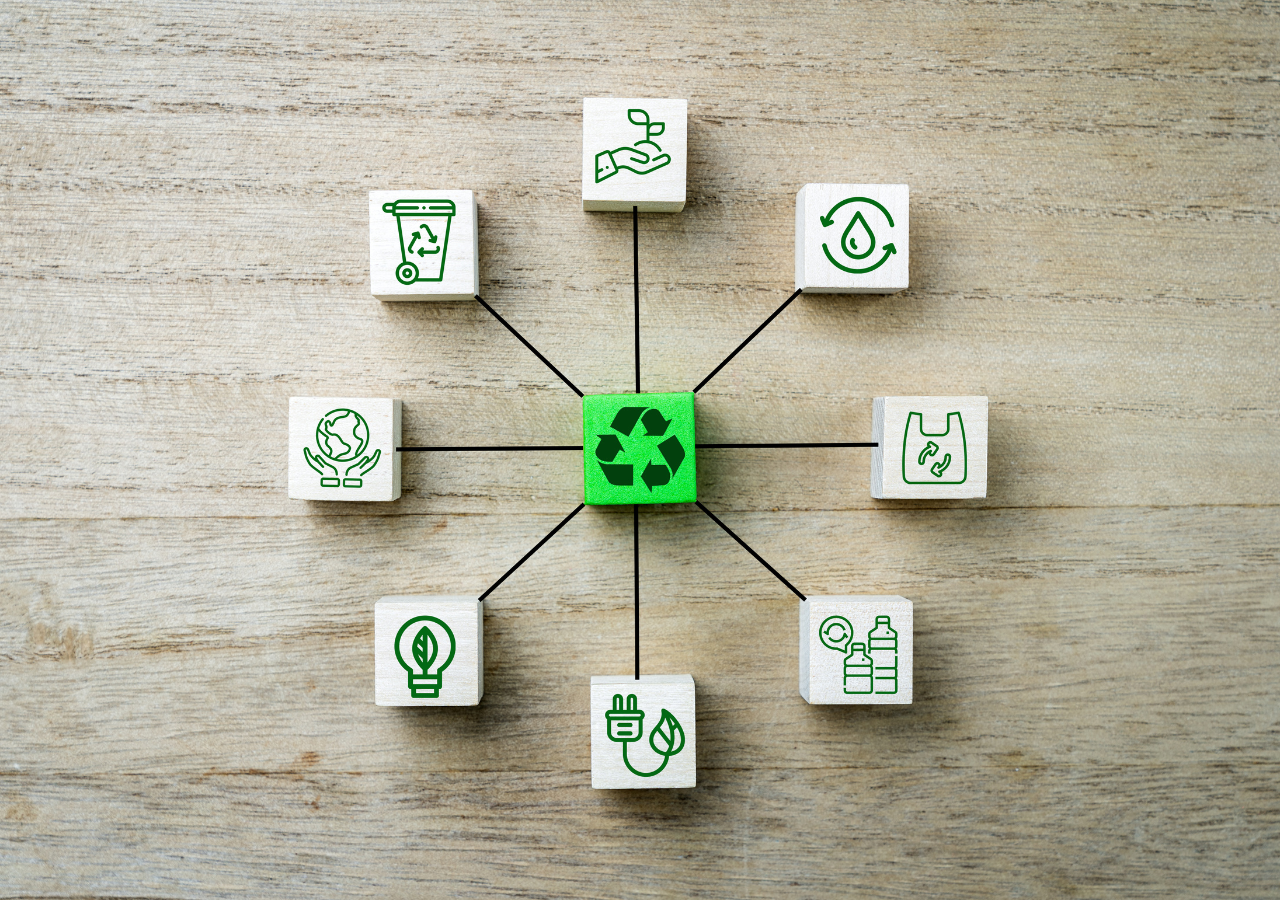Although high-income countries only account for 16 percent of the global population, they generate about 34 percent of the world’s waste. By 2050, daily waste generation is expected to rise by 40 percent per capita in low and middle-income countries, and by 19 percent in high-income countries. Waste generation continues to rise due to population growth, urbanisation, and economic expansion.
Nobody likes to see huge mounds of waste in their local area. An important part of our responsibility as stewards of the natural world is the proper management of the waste we produce. Waste management can be ranked into the following five categories, from most preferable to least:
-
Prevention - the most eco-friendly approach is to eliminate unnecessary activities that produce waste.
-
Minimization - for activities that are necessary, this approach aims to redesign processes in order to reduce dependency on resources.
-
Recycling - the practice of collecting and processing waste products to turn them into new items. Using products that are made of recyclable materials and sorting waste before it is sent to recycling plants can contribute to the success of this approach.
-
Recovery - the production of energy from waste.
-
Disposal - the least preferable way is disposing of waste in landfill sites. Landfills release methane gas, which is 84 times more effective at absorbing the Sun’s heat than carbon dioxide in the first 20 years after being released, which accelerates the greenhouse effect.
Preventing and minimising waste is better than relying on recycling. Since the invention of plastic, only nine percent of all plastic produced worldwide has been recycled. Although the process of recycling materials requires less energy than extracting virgin materials, there are many limitations with recycling. Only certain materials are recyclable, the waste cannot be contaminated and the quality of the material degrades after recycling. Regions differ in their recycling regulations and infrastructure. We are each responsible for knowing our local regulations and to do our part in supporting recycling efforts.
As consumers, we can adopt life-cycle thinking when selecting the products we purchase. Consumer values and societal culture is reflected in product packaging. A 2019 study by Environment & Climate Change Canada showed that packaging made up almost half of the 3.3 million tonnes of plastic that Canadians dispose of each year. Although certain packaging is crucial to preserve some products, often it is unnecessary, and only added for marketing purposes. Higher-end products are good examples of items with multiple layers of packaging, because consumers often associate the quality of a product with its packaging.
Applying life-cycle thinking means we should take into account that when throwing out a product, we are not only wasting the product itself, but also all the resources used in the stages before and after its use. When disposing of an item, consider the materials, water, and energy used in extracting its raw materials, processing, manufacturing, and transporting the product, as well as its end-of-life treatment and disposal processes.
Consumers have the power to set new values and influence corporations, by purchasing used products where possible, opting for minimal packaging or zero-waste packaging made of 100 percent recyclable or compostable materials, or those intended for reuse. We can keep ourselves informed, and support initiatives that attempt to address the issue of waste management.
There are mobile apps that enable shoppers to purchase groceries approaching their best before dates at discounted prices, reducing waste from grocery stores and addressing food insecurity at the same time. Pay-what-you-can grocery stores also exist, where food that is still in good condition but would otherwise be wasted is given away by restaurants and individuals.
Our Earth is our home — let’s keep it beautiful. Find out which initiatives exist in your local area, and start preventing waste today!








